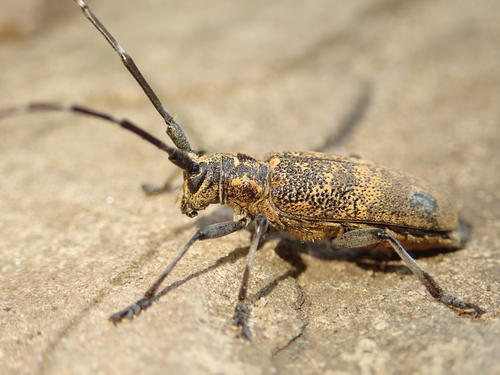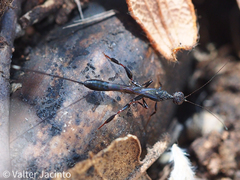Monochamus galloprovincialis

Monochamus galloprovincialis, commonly known as the pine sawyer beetle, is a notable species within the order Coleoptera and the family Cerambycidae. This beetle is often found in pine forests throughout Europe and is well-known in the Comunidad Valenciana.
The adult pine sawyer beetle is characterized by its elongated body, which measures between 10 to 25 mm in length. They display a dull brown or black color, with hints of gray or white on their elytra. The distinctively long antennae, which can be up to three times the body length in males, are a defining feature of this species.
- Habitat: This beetle primarily inhabits pine forests, where it plays a role in decomposing dead wood. It is particularly attracted to weakened or dying trees.
- Life Cycle: The life cycle of the Monochamus galloprovincialis involves complete metamorphosis with egg, larval, pupal, and adult stages. The larvae bore into the wood of pine trees, which can sometimes lead to the spread of tree diseases, as they are vectors for the pine wood nematode.
- Ecological Impact: While they play a natural role in forest ecosystems, their population can become problematic, especially in commercial pine plantations.
- Conservation: Understanding the ecological balance is crucial, and measures are often taken to monitor and control their population to prevent potential forestry damage.
The presence of Monochamus galloprovincialis in the Comunidad Valenciana is a reminder of the region's rich biodiversity and the importance of maintaining healthy forest ecosystems.







